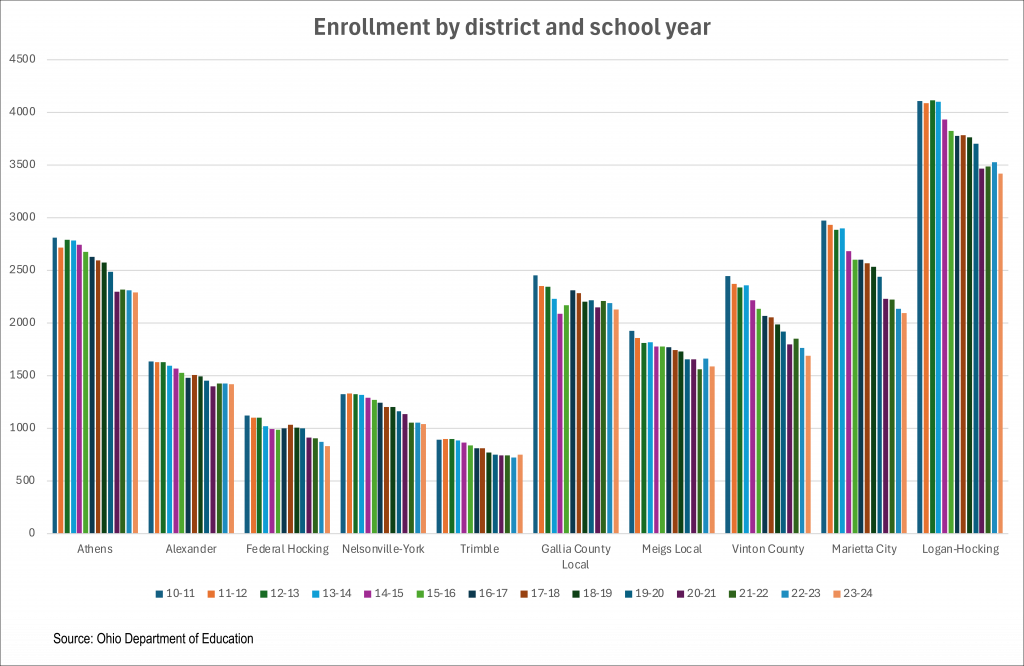News
School enrollment has not recovered after the pandemic amid a growing housing crisis
By: Shane Scalfaro
Posted on:
ATHENS, Ohio (WOUB) — Schools in southeast Ohio are feeling the effects from the pandemic and the housing crisis in their enrollment numbers.
Numbers have been going down over the years but escalated during the pandemic. After schools shut down, students had the opportunity to try new learning styles like online school and homeschooling.
Federal Hocking Local School District Superintendent David Hanning said when schools came back in-person, there were students who stayed with those alternatives.
“There are a lot of kids that it did work for, and so those families, for whatever reasons, chose to do that,” said Hanning.
A larger factor is the housing crisis. A shortage of housing and high home prices are an issue around the United States.
Logan-Hocking Local School District Superintendent Monte Bainter said families are staying in the houses they are in and not moving into new school districts.
“It’s hard for new families to move in when there’s no places for people to move into,” said Bainter.
Enrollment numbers directly impact how much state funding a school district receives, said Hanning.
“When students leave your district for whatever reasons it is, it causes a reduction in your funding,” he said.

“The state says it costs approximately $8,241 a year to educate the average student,” Webb said. “Our state share percentage is 49½ %. So, we get from the state of Ohio about $4,100 per student that we have.”
Gallia Superintendent Phillip Kuhn said their enrollment hasn’t taken a big hit, but that numbers lost are from their online platform used during the pandemic.
“There were students that were open enrolled to us, to our district from other districts because we have that online platform available and other people didn’t have it set up,” he said.
Because of this, enrollment hasn’t hurt funds too much. Kuhn pointed out other funding the district is receiving to help.
“There’s been some new monies in recent years from the Fair School Funding formula that we’ve received and an increase in property taxes recently and things like that that have helped,” he said.
Logan-Hocking’s situation is different. Monte Bainter said “we’re not talking any changes for next year,” but he has ideas for how to off-set the losses.
“That may mean some redistricting of your elementary buildings,” he said. “That comes with a lot of discussion, focus groups, community input. You know, you just don’t wave that wand to make that happen overnight.”
He’s also thought about changing how the middle and high schools are structured.
“You look at your schedule and how your schedule is comprised and how that schedule’s built,” said Bainter. “Maybe there’s an extra period into the schedule you take out, which would lessen the number of periods that you would have to get staffed and covered.”
Fed Hock, meanwhile, is considering its first operating expenses levy since 1978.
The district has been working to balance its budget through attrition.
“We’re not the only district, certainly, that’s in this boat,” said Hanning.
Among some superintendents, there is a hope that enrollment numbers will work themselves out.
“We’re hopeful in our area,” said Kuhn. “Hopeful that our enrollment is going to start trending upward.”
But that confidence is not shared by everyone.
“I think it will probably hit a plateau,” said Hanning. “I don’t expect enrollment numbers to go up.”

